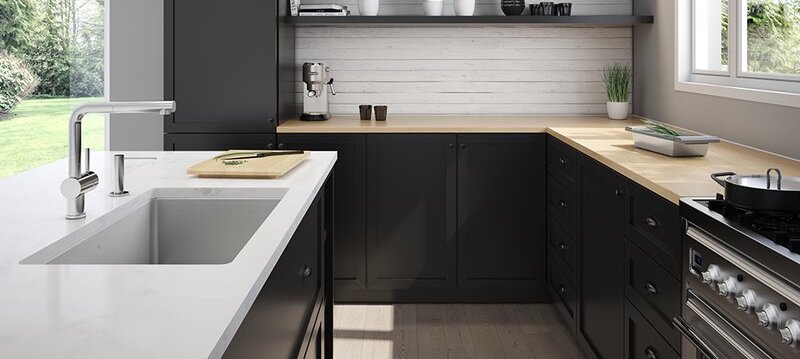Traditional homes are classic and elegant. They are timeless and will never go out of style. If you are someone who likes hunting down antiques and unique pieces of furniture, then the traditional design style will appeal. The traditional decor also works well in larger homes where you have the space to feature formal areas.
Traditional homes are warm, inviting, and sumptuous. If you want to evoke a luxurious feel in your home, then traditional is the way to go. But where do you even start? Let’s look at what makes up a traditional deco theme and then consider if you can incorporate it into various rooms.
What are the design elements of traditional decor?
-
Structural embellishments
A traditional room looks the part starting from the bare structure. Crown molding, trim, and carved details are the hallmark elements of traditional design. Structural embellishments are key to making any space look traditional. Traditional interior design is the opposite of minimalist and it usually features ornate details on the walls and ceiling. Leave no surface untouched with carved details for the ultimate traditional look.
-
Window treatments
Window treatments fall under the same umbrella of ornate and stately for traditional homes. Heavy drapes or multi-layered curtains are the order of the day along with substantial trim/molding around windows. Floor to ceiling drapes are a standard feature of most traditional-style homes.
-
Curves and contours
Modern decor and minimalist interior styles often feature straight lines and geometric shapes. Traditional design leans moe towards curves and contours. Every surface or piece of furniture will feature curved lines in some form. From cabriole furniture legs to fluffy pillows, a traditional room is majestic and inviting at the same time.
-
Symmetry
Symmetry is another strong feature of traditional decor. If you ever have a doubt about the number of chairs or furniture pieces you need, go for matched pairs. A set of couches facing each other or 2 chairs around a side table will always work. Matching corner cabinets or comfy chairs on either side of a window are other examples of traditional decor. Symmetry is also soothing to our eyes, so it imparts a calm feeling to any room.
-
Patterns and textiles
One thing you will rarely find in a traditional room is solid colors. Perhaps the only solid color you will see will be the drapes or curtains. Patterns are the order of the day with flowers and stripes among the most popular designs. But not any floral or striped design will work here. Look for rich and elegant curves even on upholstery and throw pillows.
Traditional homes also feature sumptuous textiles such as silk and velvet. Throws and pillows will often have tassels or other embellishments to accentuate them. Silken textiles in deep and vibrant hues are common in traditional rooms.
-
Layers and accessories
When it comes to traditional decor, more is definitely more. When decorating a room in the traditional design style, you need to start with the basic structure and layer additions on top of that foundation. So start with the color palette, then add ornate furniture. Layer rich textiles and then go for additional accessories. You won’t find a lot of empty space or horizontal surfaces in a traditional home.
How to turn your home into a traditional haven
Living room
Symmetrical pieces in deep and rich woods are the order of the day here. Highlight the molding or add additional trim to the fireplace for an elegant feel. Antique or period furniture will fit right in. Layer art pieces photographs and light fixtures on the walls. Side tables and buffets can feature matching lamps or other accessories (flower vases, books, candles, etc.)
Bathroom

For a traditional bathroom, you can’t go wrong with a black and white color palette. Use neutral colors on the walls such as taupe, cream or light greys. Choose white furniture here – from the cabinets to the vanity. Add a splash of color with accessories such as towel rods, lights, and mirror frames. Layering is important here as well, so do not leave entire walls empty without anything on them. Just make sure to use accessories that are designed to withstand moisture in this room.
Kitchen

A traditional kitchen is warm and inviting with a touch of country to it. Use subtle and muted colors in the kitchen to make it feel cozy and comforting. Cabinets with no handles or open shelving have no place in a traditional kitchen. Drawer fronts and cabinet doors should feature curved lines or interesting silhouettes. Use textiles and greenery to good effect here – hand towels in rich colors and potted plants are great additions. Faucets in copper, gold, or bronze finish work extremely well in a traditional kitchen.











































